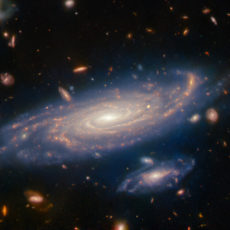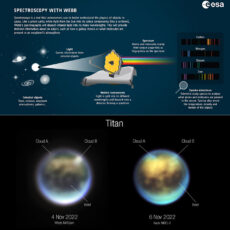
NASA’s James Webb Space Telescope has detected the first rich population of brown dwarf candidates located outside our own Milky Way Galaxy in the star cluster NGC 602. The latter is basically a satellite galaxy approximately 200,000 light-years from Earth, and its local environment is a close analogue of what existed in the early Universe, with very low abundances of elements heavier than hydrogen and helium.

This new image from Webb’s Near-InfraRed Camera (NIRCam) of NGC 602 showcases the cluster stars, the young stellar objects, and the surrounding gas and dust ridges, as well as the gas and dust itself. You can also observe the significant contamination by background galaxies and other stars in the Small Magellanic Cloud. Astronomers will now study the newly discovered young metal-poor brown dwarfs in NGC602 to unlock the secrets of how stars and planets formed in the harsh conditions of the early universe.
- 3 LEGO space toys in 1 box – Boys and girls ages 9 and up who love space can build and rebuild 3 different sets using the same set of bricks with...
- Endless space play possibilities – Kids can play out daring stories among the stars with 3 different space playsets: an astronaut figure, a space...
- Posable space figures – The astronaut toy has posable legs, feet, arms and fingers, and the space dog has a posable tail and legs so kids can choose...
Only with the incredible sensitivity and spatial resolution in the correct wavelength regime is it possible to detect these objects at such great distances. This has never been possible before and also will remain impossible from the ground for the foreseeable future,” said Peter Zeidler, lead author of AURA/STScI for the European Space Agency.













